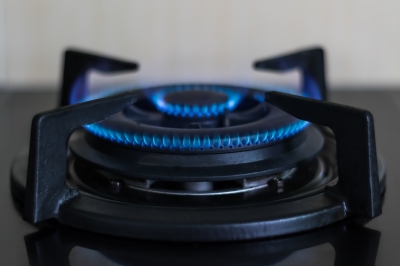Energy situation in winter 2022/2023
by Dumitru Chisăliță
The endless promotion of the filling rate of storage facilities as the great achievement and the great salvation of Romania is a myth. Romania, like Europe, is at the mercy of the weather and fate. If we are lucky to have a mild winter, if the wind blows, if it rains, if many consumers shut down – due to the difficult economic problems and if the very expensive imported gas continues to arrive in Romania in winter – only then will we have gas for all consumers next winter. There has been a lot of discussion lately about Security of Energy Supply in the coming winter, which we will discuss below:
Storage myth. Gas in storage is at a high level, but it is not the highest in the history of these storage facilities. The storage facilities have been designed to fulfil three functions: legal speculative commercial need (purchasing gas in summer when it is cheaper to use it in winter when it is more expensive), technological (the need to ensure continuity of production requires storing gas for when demand is low) and demand volatility (to build up a reserve for when demand is very high). These functions have determined that the storage facilities are not designed with strategic features (only in Hungary there are such storage facilities), which can ensure gas supply during winter in case a gas supply source disappears (gas import stops during winter). That is, they were not sized in such a way that the stored gas could replace 100% Russian gas. According to Bloomberg, gas storage in Europe, at today’s load levels, can only cover gas demand for two and a half months in a scenario of a total lack of supplies from Russia and a winter similar to winter 2021/2022.
Weather factor. Weather is the most unpredictable factor. Last winter was a mild one, and Europe came out of the cold season with high fuel stocks. In addition, forecasts for November 2022, when gas was usually already used for heating, show above normal temperatures. But if Europe faces a winter similar to 2012, when it was the coldest winter in a decade, then gas demand will not be met.
Favorable climatic conditions. Along with the risk of unpredictability of the thermal regime in the coming winter, a new risk factor that must be taken into account and that can greatly influence the future gas demand of Europe (including Romania) is the variability of climatic conditions that can greatly reduce electricity produced from renewable sources and require large quantities of gas to compensate for the electricity in demand. Thus, fewer hours of sunlight, too strong or too weak air currents, lack of precipitation may lead to a reduction in the amount of solar, wind and hydro energy compared to previous years, which will have to be covered mainly by natural gas. An aspect that can radically change daily gas demand.
Unplanned outages. They represent a big risk in supplying Europe. Liquefied gas coming from overseas is subject to various risks and can lead to unplanned outages. The situation is all the more serious if these accidents happen at large facilities, as happened at the Freeport LNG plant in the United States, which was damaged by fire in June 2022. The incident has considerably reduced the country’s exports, which Europe easily overcame in the summer amid reduced gas demand from China.
Competition with Asia. Beijing’s zero-Covid policy, as well as high spot prices, have reduced China’s liquefied natural gas (LNG) imports by 20% this year, leaving significant resources for Europe. Bloomberg expects China – the world’s largest LNG buyer last year – to increase purchases by December 2022, but keep them below 2021 volumes. However, a surge in demand from Asia will amplify the global supply crisis.
The specific situation in the European energy system. Even though industries reduced gas consumption, the demand for fuel for electricity generation was higher than expected. Heatwaves and droughts have almost reduced hydropower production this summer, while higher river temperatures and power plant outages in France have reduced nuclear power production. This year Russia supplied Europe with about 25% of the gas needed, much of the stored gas being Russian gas left over from the 2021 cycle or stored this year. The approx. 2,700 million cubic meters of gas imported on average per week from the Russian Federation in 2021 was replaced this year by approx. 1,500 million cubic meters of LNG, approx. 300 million cubic metres from Norway, the rest up to approx. 800 million cubic metres being still imported from the Russian Federation.
The minimum daily import requirement at EU level in a mild winter such as the winter of 2021/2022, in February 2022, was at a level of approx. 1,300 million m3/day (in addition to the favorable thermal regime, it is important to have climatic conditions that favor the production of renewable energy at an optimal level), which can theoretically be covered:
- approx. 550 mcm/day – LNG
- approx. 400 mcm/day – Norway
- approx. 100 mcm/day – Algeria
- approx. 80 mcm/day – Russia
- approx. 40 mcm/day – Azerbaijan
- approx. 130 mcm/day – unmet import gas needs (10% insecurity)
Romania’s daily import requirement, in a mild winter, in February 2023 (statistically the coldest month), at an estimated maximum consumption level of approx. 50 – 55 mcm/day, can theoretically be covered:
- approx. 25 mcm/day – domestic production
- approx. 22 mcm/day – gas from storage
- approx. 3-8 mcm/day – unmet import gas needs (6-14% insecurity)
Romania’s daily import requirement in an extreme winter, similar to winter 2012, taking into account the estimated reduction in energy consumption this winter due to high gas prices, in February 2023, could lead to a consumption level of about 66 million cubic meters per day, which would make Romania’s import requirement be 30%, i.e. being in the position of supplying gas exclusively to protected consumers.



Recent Comments